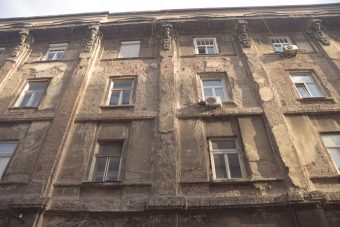South East Europe region (SEE) faces many difficulties in the energy sector as a result of its turbulent history, the decadence of infrastructure and collapse of national economies. Although energy prices in Southeast Europe continue to be significantly lower than in the European Union, the abolition of state regulations and transition to a liberalized energy market leads to the increase in prices. It can be expected that this will create significant problems in meeting the basic needs for energy among the population which could open the path to an unsustainable, unhealthy and uncertain future.
What is Energy Poverty?

Energy poverty represents the inability of the household to provide the adequate amount of energy for the home, that is necessary for maintaining the living space warm enough and well-lit, then the inability to access the necessary spectrum of energy services as well as the inability to afford sufficient amount of energy for everyday needs.
– Defining energy poverty has provoked many debates. An increasing number of research shows that different combinations of indicators should play a role in the assessment of energy poverty. Energy poverty in the Balkans is extremely widespread and it requires immediate action regardless of the exact definition of energy poverty or its threshold value – said Lidija Kesar from NGO Fractal who was one of the contributors to the publication “Energy Poverty in South-East Europe: Surviving the Cold”.
It is proved that the life in energy poverty has harmful effects on health, which implies high levels of pulmonary diseases, as well as increased mortality in the winter and poor mental health.
It is wrongly assumed that energy poverty has the same characteristics throughout the region, and through practice, it has been shown that regional and historical differences play an important role in the incidence and characteristics of energy poverty. Although it is difficult to determine what makes a certain amount of energy adequate for a home when it comes to adequate heating, we can say that it is just the optimal temperature for health, and according to the World Health Organization, it should be 21 degrees in the living rooms or 18 degrees in other rooms.
Who is Sensitive to Energy Poverty?
Endangered groups are those that according to the economic, socio-demographic and energy indicators of households are more likely to become energy poor than the general population. For example, it has been established that social welfare beneficiaries are significantly more energy-poor than the average population and that single parents have more chance to be energy-poor compared to households with both parents. Pensioners are more often energy-poor compared to employed persons. Older people are usually affected by energy poverty because they spend most of their time at home. At the same time, it is important to keep in mind that belonging to a particularly vulnerable group does not necessarily mean that a person or a family is energy poor.

While the governments of South-East Europe are struggling to align their policies with the EU acquis, clear guidelines on how to deal with energy poverty or the issue of vulnerability do not arise. The European Commission recognizes the fact that the problem of energy poverty is on the rise and that there is still no clear framework. The Working Group on Endangered Consumers was established in 2013 with the aim of conducting a qualitative and quantitative review of various aspects of vulnerability and it should provide recommendations for the definition of vulnerable groups of consumers in the energy sector. However, it was concluded that it is not possible to have a unique definition of vulnerable consumers that relate to the entire EU.
Read more about the situation in Serbia and what should be done in the article that was published in the tenth issue of the Energy Portal Magazine SUSTAINABLE DEVELOPMENT, in March 2018.
Prepared by: Nevena Djukic

